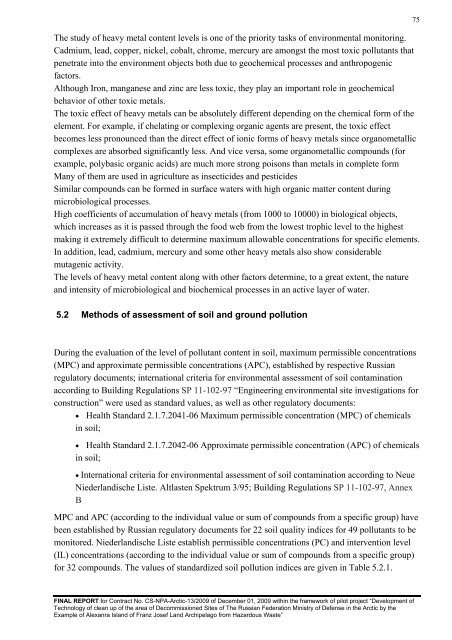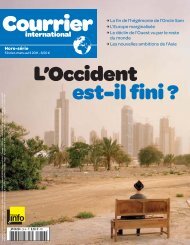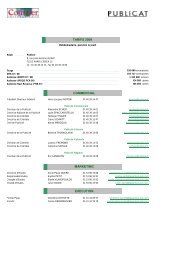2 ОРГАНИЗАЦИЯ И МЕТОДИКА РАБОТ - Courrier international
2 ОРГАНИЗАЦИЯ И МЕТОДИКА РАБОТ - Courrier international
2 ОРГАНИЗАЦИЯ И МЕТОДИКА РАБОТ - Courrier international
Create successful ePaper yourself
Turn your PDF publications into a flip-book with our unique Google optimized e-Paper software.
The study of heavy metal content levels is one of the priority tasks of environmental monitoring.<br />
Cadmium, lead, copper, nickel, cobalt, chrome, mercury are amongst the most toxic pollutants that<br />
penetrate into the environment objects both due to geochemical processes and anthropogenic<br />
factors.<br />
Although Iron, manganese and zinc are less toxic, they play an important role in geochemical<br />
behavior of other toxic metals.<br />
The toxic effect of heavy metals can be absolutely different depending on the chemical form of the<br />
element. For example, if chelating or complexing organic agents are present, the toxic effect<br />
becomes less pronounced than the direct effect of ionic forms of heavy metals since organometallic<br />
complexes are absorbed significantly less. And vice versa, some organometallic compounds (for<br />
example, polybasic organic acids) are much more strong poisons than metals in complete form<br />
Many of them are used in agriculture as insecticides and pesticides<br />
Similar compounds can be formed in surface waters with high organic matter content during<br />
microbiological processes.<br />
High coefficients of accumulation of heavy metals (from 1000 to 10000) in biological objects,<br />
which increases as it is passed through the food web from the lowest trophic level to the highest<br />
making it extremely difficult to determine maximum allowable concentrations for specific elements.<br />
In addition, lead, cadmium, mercury and some other heavy metals also show considerable<br />
mutagenic activity.<br />
The levels of heavy metal content along with other factors determine, to a great extent, the nature<br />
and intensity of microbiological and biochemical processes in an active layer of water.<br />
5.2 Methods of assessment of soil and ground pollution<br />
During the evaluation of the level of pollutant content in soil, maximum permissible concentrations<br />
(MPC) and approximate permissible concentrations (APC), established by respective Russian<br />
regulatory documents; <strong>international</strong> criteria for environmental assessment of soil contamination<br />
according to Building Regulations SP 11-102-97 Engineering environmental site investigations for<br />
construction were used as standard values, as well as other regulatory documents:<br />
Health Standard 2.1.7.2041-06 Maximum permissible concentration (MPC) of chemicals<br />
in soil;<br />
Health Standard 2.1.7.2042-06 Approximate permissible concentration (APC) of chemicals<br />
in soil;<br />
International criteria for environmental assessment of soil contamination according to Neue<br />
Niederlandische Liste. Altlasten Spektrum 3/95; Building Regulations SP 11-102-97, Annex<br />
B<br />
MPC and APC (according to the individual value or sum of compounds from a specific group) have<br />
been established by Russian regulatory documents for 22 soil quality indices for 49 pollutants to be<br />
monitored. Niederlandische Liste establish permissible concentrations (PC) and intervention level<br />
(IL) concentrations (according to the individual value or sum of compounds from a specific group)<br />
for 32 compounds. The values of standardized soil pollution indices are given in Table 5.2.1.<br />
FINAL REPORT for Contract No. CS-NPA-Arctic-13/2009 of December 01, 2009 within the framework of pilot project Development of<br />
Technology of clean up of the area of Decommissioned Sites of The Russian Federation Ministry of Defense in the Arctic by the<br />
Example of Alexanra Island of Franz Josef Land Archipelago from Hazardous Waste<br />
75








